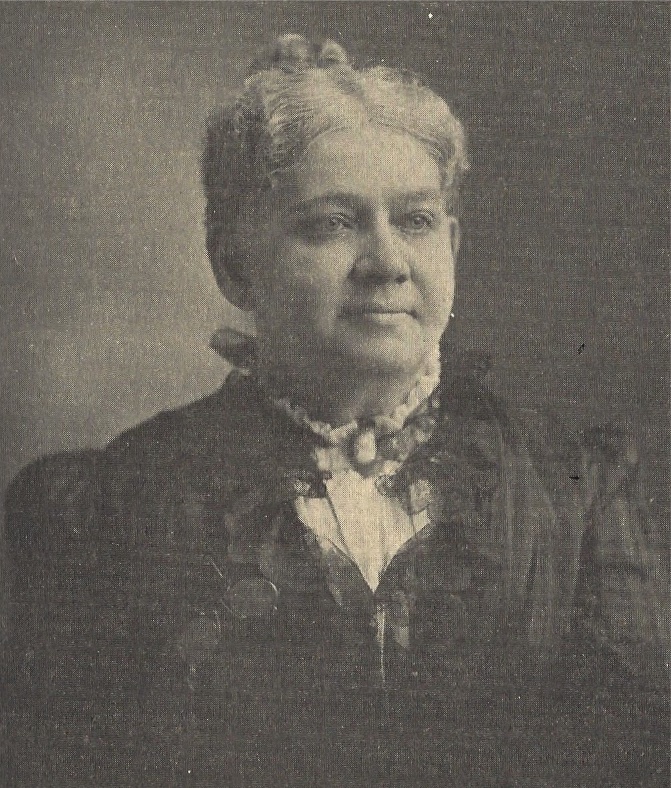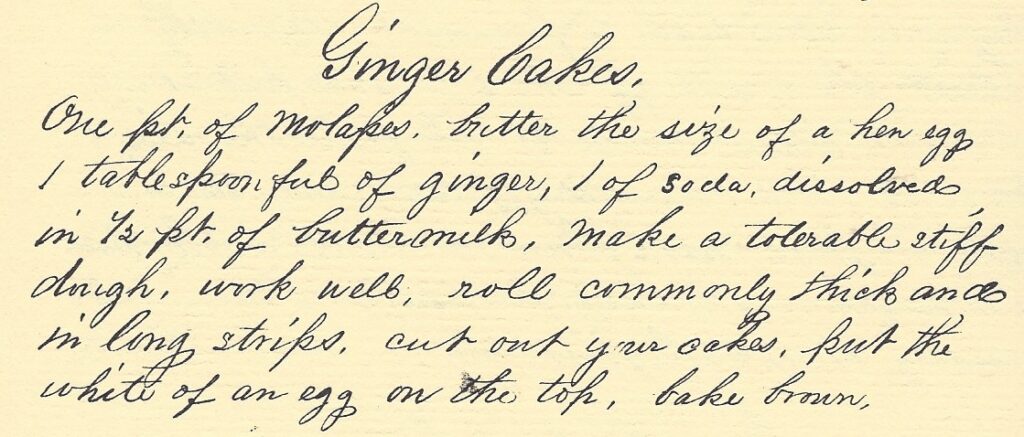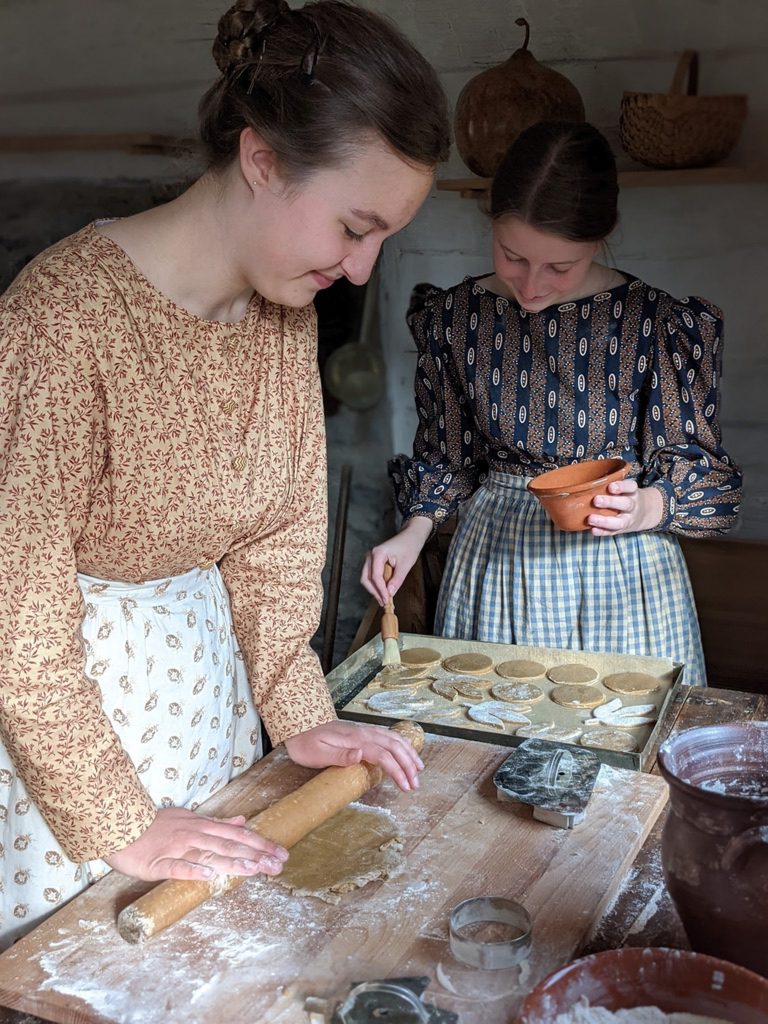Perhaps no other food evokes the Christmas spirit more powerfully than gingerbread. The aroma of gingerbread baking in an oven just seems to conjure images of hearth and home at the holidays. Gingerbread was immensely popular in early America, though the spices required to make it were expensive. The most important ingredient—ginger—was grown in Asia and had to travel across continents and oceans before it finally landed in humble country stores like the one at Eden’s Ridge, TN.
“Soft gingerbread” was typically baked like we would a cake today. “Ginger cakes,” however, were more like what we call cookies now. In the 18th century, ginger cakes were unleavened and crispy—similar to a modern “ginger snap.” In the 19th century, when chemical leaveners became more commercially available, ginger cakes became lighter and softer.
Letitia Dalton Lynn (nicknamed “Lute”), granddaughter of John and Letitia Gaines, recorded numerous versions of ginger cakes in her 1862 handwritten receipt (recipe) book. All of her receipts call for baking soda and buttermilk or sour cream in addition to the standard flour, molasses, ginger, and butter “the size of a hen egg.”
Lute’s numerous receipts for ginger cakes suggest that this food was undoubtedly enjoyed by those living at Exchange Place in the mid-19th century. Ginger cakes might have been a frequent treat for the Gaines and Preston families, while their tenant and enslaved laborers might only have enjoyed them once a year at Christmas—probably with similar delight as described by Booker T. Washington, born enslaved in Virginia, and who remembers receiving ginger cakes in his stocking at Christmas:
In those days, the old people, as well as the young, used to hang up their stockings. The household slaves, and many who worked in the field as well, would hang their stockings in their master’s or mistress’s rooms. The children usually hung their stockings in the cabins of their parents. It has been my pleasure and privilege to receive many Christmas presents, but I do not think I ever had a present that made me feel more happy than those I received during what was, as I remember, the last Christmas I spent in slavery. I awoke at four o’clock in the morning in my mother’s cabin, and creeping over to the chimney, I found my stocking well-filled with pieces of red candy and nearly half a dozen ginger cakes. In addition to these were the little wooden shoes with the leather tops…
Every year at Exchange Place’s Christmas in the Country event, the Eden’s Ridge Hearth Cookery Society prepares Lute’s ginger cakes with cookie cutters reproduced from originals owned by the Preston family. One cutter is in the shape of a horse and the other a tulip (though it has been appropriated as a three-pronged sassafras leaf because that is Exchange Place’s logo). The Junior Apprentices sell these cookie cutters, made by a historic tinsmith in Williamsburg, Virginia, to help raise funds for their program. Each cutter comes with Lute’s recipe so that her ginger cakes can be enjoyed in homes across the community at Christmas.

Letitia Dalton Lynn
“Lute”


Junior Apprentices making “Lute’s Ginger Cakes” for Christmas in the Country.
The mission of Exchange Place Living History Farm is to preserve and interpret the heritage of mid-19th century farm life in Northeast Tennessee. A private, non-profit organization, Exchange Place is maintained and operated primarily by volunteers and is supported by donations, fundraisers, memberships, and grants.

Exchange Place
4812 Orebank Rd,
Kingsport, TN 37664
423-288-6071